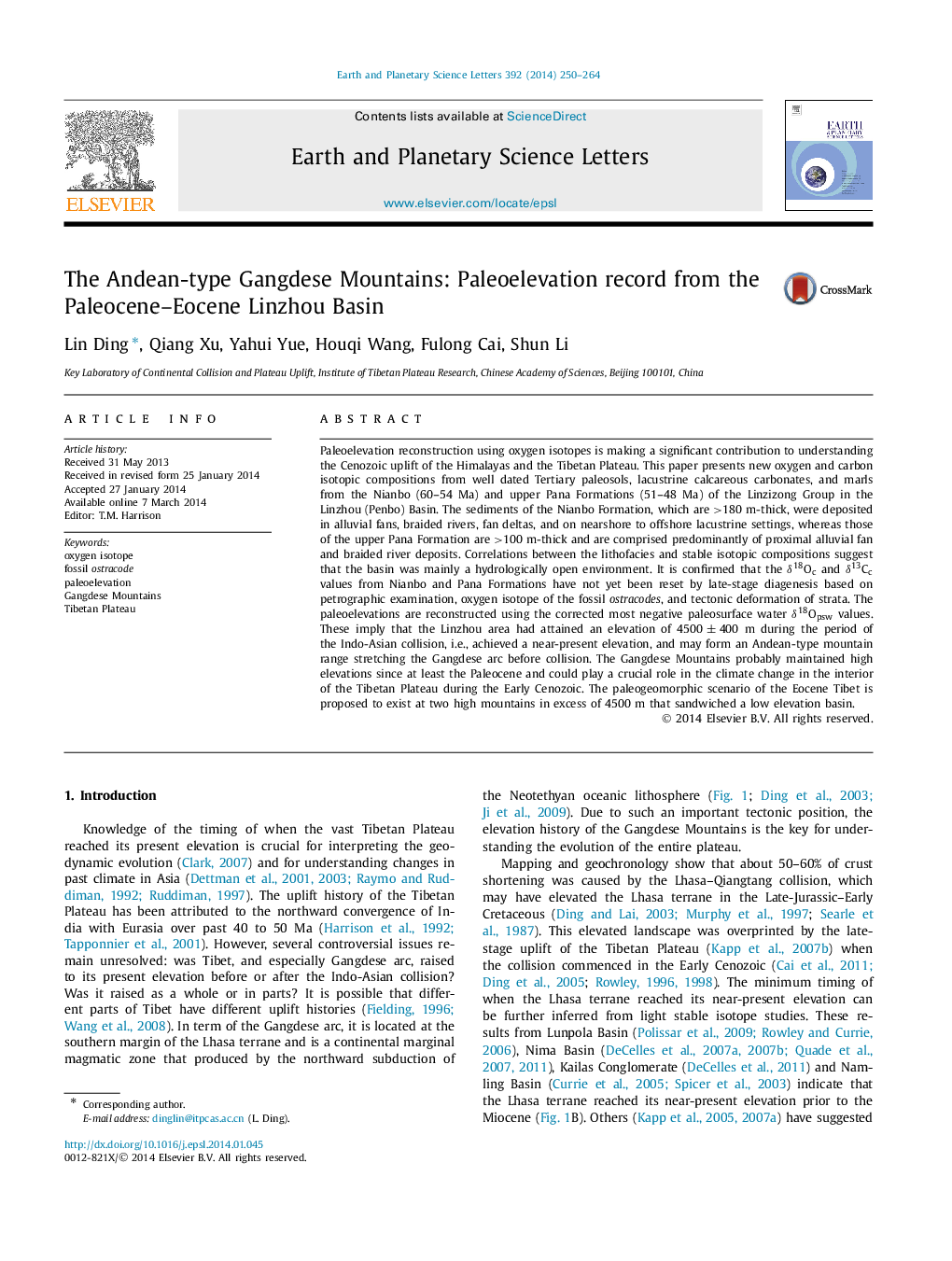| کد مقاله | کد نشریه | سال انتشار | مقاله انگلیسی | نسخه تمام متن |
|---|---|---|---|---|
| 6429514 | 1634764 | 2014 | 15 صفحه PDF | دانلود رایگان |
- δ18O data of Ostracode analyzed in situ by NanoSIMS rule out diagenetic reset.
- The southern Lhasa terrane reached an elevation of 4500 m in Paleocene-Eocene.
- Eocene Tibet was two high mountains sandwiched one low corridor.
Paleoelevation reconstruction using oxygen isotopes is making a significant contribution to understanding the Cenozoic uplift of the Himalayas and the Tibetan Plateau. This paper presents new oxygen and carbon isotopic compositions from well dated Tertiary paleosols, lacustrine calcareous carbonates, and marls from the Nianbo (60-54 Ma) and upper Pana Formations (51-48 Ma) of the Linzizong Group in the Linzhou (Penbo) Basin. The sediments of the Nianbo Formation, which are >180 m-thick, were deposited in alluvial fans, braided rivers, fan deltas, and on nearshore to offshore lacustrine settings, whereas those of the upper Pana Formation are >100 m-thick and are comprised predominantly of proximal alluvial fan and braided river deposits. Correlations between the lithofacies and stable isotopic compositions suggest that the basin was mainly a hydrologically open environment. It is confirmed that the δ18Oc and δ13Cc values from Nianbo and Pana Formations have not yet been reset by late-stage diagenesis based on petrographic examination, oxygen isotope of the fossil ostracodes, and tectonic deformation of strata. The paleoelevations are reconstructed using the corrected most negative paleosurface water δ18Opsw values. These imply that the Linzhou area had attained an elevation of 4500±400 m during the period of the Indo-Asian collision, i.e., achieved a near-present elevation, and may form an Andean-type mountain range stretching the Gangdese arc before collision. The Gangdese Mountains probably maintained high elevations since at least the Paleocene and could play a crucial role in the climate change in the interior of the Tibetan Plateau during the Early Cenozoic. The paleogeomorphic scenario of the Eocene Tibet is proposed to exist at two high mountains in excess of 4500 m that sandwiched a low elevation basin.
169
Journal: Earth and Planetary Science Letters - Volume 392, 15 April 2014, Pages 250-264
